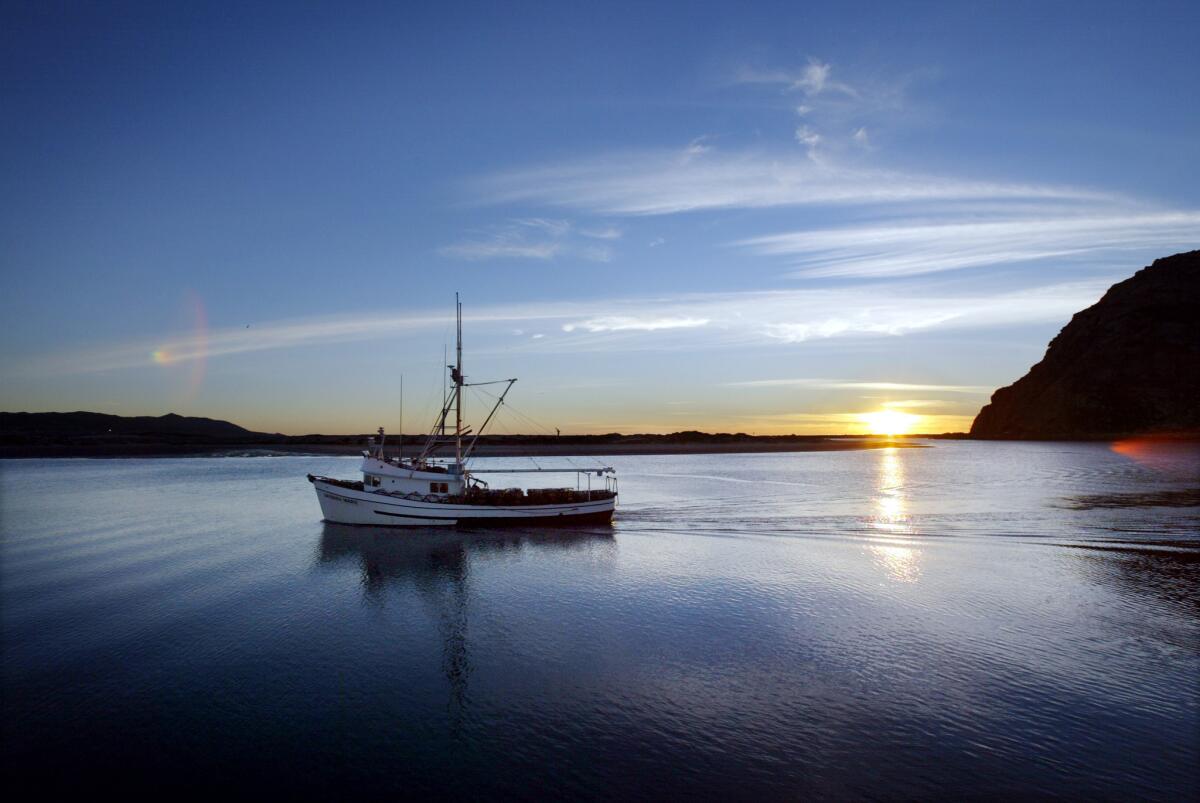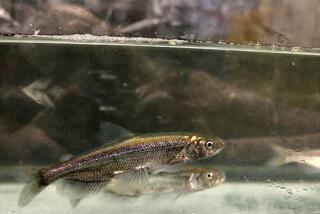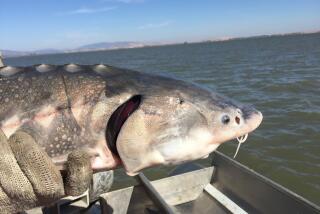Seafood Watch cites dramatic turnaround in rockfish, other West Coast fish

- Share via
In a major turnaround that argues for strong fisheries management, the Monterey Bay Aquarium’s trusted Seafood Watch program has upgraded the status of 21 commercially important fish, including most species of Pacific rockfish in a report released Tuesday.
Overall, according to Seafood Watch, 84% of all the groundfish landings on the West Coast are now considered either “best choice” or “good alternative” – the two highest rankings. Groundfish are fish that live on or near the bottom. Previously they had been considered troubled because of overfishing and because of the ecological damage caused to the ocean floor by trawling.
“This is one of the great success stories about ecological and economic recovery of a commercially important fishery,” said Margaret Spring, vice president of conservation and science, and chief conservation officer for the Monterey Bay Aquarium in a release.
“A huge part of the turnaround is reliance on science-based conservation and management practices that Congress endorsed in its 2006 update of U.S. fishery law.”
Among the species upgraded are all trawl- and long-line caught rockfish, which previously had been listed as “avoid” and flatfish such as sanddabs and Pacific soles, which were bumped from “good alternative” to “best choice.”
Those species have been the subject of particularly strong regulation over the last 15 years after their numbers dropped to a critical point, where the continued existence of the species were in question.
Rockfish, in particular, were once the backbone of the California fishing industry, but their numbers had fallen to such an extent that many types have vanished from the market.
“There was a recognition about 15 years ago that the catch was just way too high on a lot of these species and the result was a major decline in the biomass in those populations,” said Santi Roberts, science manager at Seafood Watch. “They’d come down to a very small percentage of the original numbers. That basically precipitated what is now a pretty extensive management system.”
The Seafood Watch report attributes the improvement to reducing the catch of overfished species, use of area closures and Marine Protected Areas to protect vulnerable habitats, reducing bycatch (the accidental killing of some species while fishing for others), conservative fishing quotas and better monitoring and control of the catch.
“I think all of these pieces played a part,” Roberts said. “Each of these measures is used by fishery managers to meet different objects. In this case, the object was really to minimize the catches of these species that had been declared overfished.
“Much of what has happened has been to reduce the catch, and that includes areas that are closed to fishing as well as improving assessments and better monitoring of the catch to make sure it’s within the parameters that allows these species to recover.”
The Seafood Watch upgrading comes after the Marine Stewardship Council in June certified 13 groundfish species as coming from well-managed and sustainable fisheries.
“Not long ago many of these species were in collapse,” said Tim Fitzgerald, who manages the Environmental Defense Fund’s sustainable seafood program. “Thanks to smarter fishing regulations and fishermen’s commitment to conservation, consumers and seafood businesses can now add West Coast groundfish to their list of sustainable choices.”
Roberts says that the success of these measures argues for the effectiveness of strong fisheries management.
“This is a very positive thing, when you see these kinds of improvements with respect for population, bycatch, effective management and measures that protect the biological seafloor that provides shelter and food for the species,” he said.
“The efforts that have been put into place here on the West Coast are a good reflection of the measures that could be put into place for other species. There are still a lot of species out there where the fishing discards are just way too high. What’s been impressive has been the monitoring of that bycatch and the ongoing assessment of whether it’s sustainable. These are basic measures that should be considered by fisheries managers globally.”
Are you a food geek? Follow me on Twitter @russ_parsons1
More to Read
Eat your way across L.A.
Get our weekly Tasting Notes newsletter for reviews, news and more.
You may occasionally receive promotional content from the Los Angeles Times.











